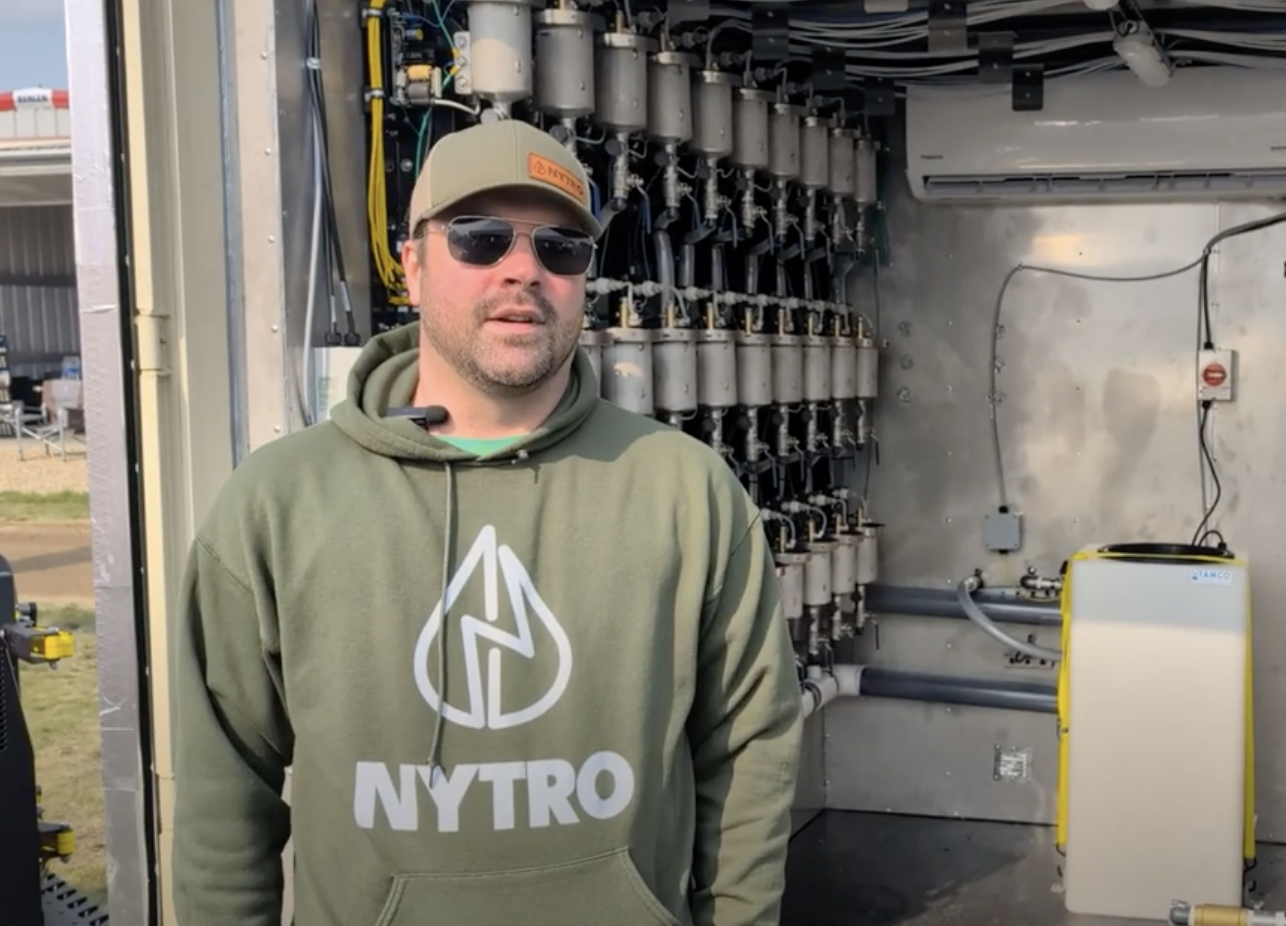Morris Industries introduced a prototype Morris Contour Drill in 2006. This year, it has produced a few commercial units and has them in the field for the 2007 seeding season.
“It’s an independent opener drill, which seems to be the way things are going nowadays. It’s not the same as, but on the same principle as a Seedhawk and Seed Master type,” said Graham Gardner, communications manager with Morris in Saskatoon.
“What we’ve done is come up with a different system how we handle the hydraulics and how we built the independent opener, which we think is better. We use a parallel linkage on the opener, with one seed and fertilizer boot to handle the seeding and fertilizing, as opposed to two.”
Read Also

VIDEO: Green Lightning and Nytro Ag win sustainability innovation award
Nytro Ag Corp and Green Lightning recieved an innovation award at Ag in Motion 2025 for the Green Lightning Nitrogen Machine, which converts atmospheric nitrogen into a plant-usable form.
Hydraulics on the Contour Drill are set up so the operator can adjust the packing pressure and trip out pressure on the go using a hydraulic accumulator.
“Beyond that, we’ve got a short contour on our opener from front to back. It’s a double shoot system, but the boot we use is a paired row boot.”
He added that the fertilizer is dropped about three-quarters of an inch below and between the seed.
“The biggest thing is the opener, with the parallel linkage. The seed angle stays the same throughout its range of motion, which is ideal for the precise placement of seed and fertilizer.”
Gardner said the hydraulics on the opener act as a cushion. Because a packer is attached to the opener, the hydraulics adjust the packing pressure as well as the trip out. Dropping off the trip pressure also means dropping off the packing pressure.
“We haven’t nailed the packer down yet,” he said.
“We’ve got a pneumatic and a semi pneumatic and we’re just seeing how it works in the different soil types. Right now it seems to be shedding pretty good and it’s been pretty moist out there, so it’s working well. The opener is also working well in moist conditions.”
The drill uses independent openers mounted on a new slab frame.
“The opener is allowed to move independently of the frame. We don’t have to have any of the flexibility in the frame. All the flexibility is in the opener,” he said.
“We’ve got a three frame and a five frame model. The five frame will go up to 72 feet, while the three frame goes up to 47 feet.”
Morris has one five-section frame unit and five three-section frame units in the field this year.
“We use our eight series XL triple tank cart behind the drill. We’re working on the opener for anhydrous. Right now it’s just dry fertilizer. There’s a fair bit of demand for the anhydrous, so we’ll be taking a look at that, and possibly liquid as well.”
Gardner said hydraulic openers are fairly common in Australia.
Morris had been building different hydraulic openers in Australia and after looking at what was selling in Canada, decided to develop hydraulic-based independent openers for North American farmers.
Soil variability across individual fields can be high in parts of Australia. With this type of system, he said farmers are able to adjust on the go.
“You’re not stuck with a 400 pound trip or a 500 lb. trip. You can adjust it for various soil conditions. Here, you might want to back it off if you’re going over rocky ground and you don’t want to bang up the machine. You can drop it off, let it trip out, then readjust your pressure from the cab. That’s a big plus.”
For this inaugural spring in the field, Gardner said Morris wants the first farmers to seed as many crops as possible to give it a good test.
“We’ve got guys putting in peas, canola, cereals. We want to make sure the cereals, oilseeds and pulses go through and right now it’s looking pretty good,” he said.
“It’s a small run. We don’t suspect anything is going to happen, but without enough acres you never know. We only wanted to do a short run this year, then we should be good to go come fall.
“They’re in the States and across Western Canada. We want to hit just about every type of soil condition we can find.”














